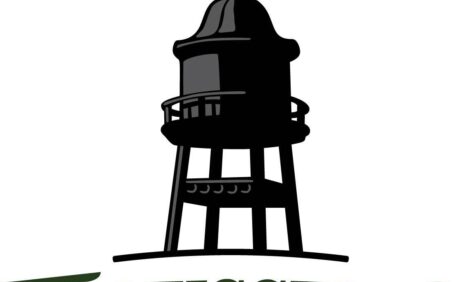



Insect Control on Swine
Prepared by Lee Townsend, Extension Entomologist, University Of Kentucky - This article looks at methods to control insect populations on pig farms, and focuses on the correct insecticides to use for the situation.Note: The instructions for use of the recommended pesticides are not as current nor comprehensive as the pesticide labels. They are intended to be used as guidelines only. Before using any pesticide, READ THE LABEL for specific instructions and slaughter restrictions. Many insecticides are sold under brand names not listed in this publication. Check labels for the names of recommended active ingredients. Do not treat sick or stressed animals.
House Fly Control in and around Swine Facilities
An on-going sanitation program is essential to maintaining fly populations at low levels. Manure, spilled feed, and wet straw should be removed twice a week in order to interrupt the breeding cycle of flies. Manure should either be spread onto fields to dry or placed in lagoons to liquefy. Insecticides may be applied as residual sprays, non-residual knockdown or contact sprays, baits, or feed additives. Always read and follow label directions.
Residual Fly Sprays
Insecticides may be applied as residual surface sprays, non-residual space sprays, baits, manure sprays, or feed additives. Always read and follow label instructions before applying insecticides for fly control. Treat walls, ceilings, posts, and other fly resting sites. Spray these areas thoroughly and to the point of runoff. In order to minimize control failures due to insecticide resistance, do not apply the same insecticide, or insecticide within the same chemical class (particularly pyrethroids), repeatedly throughout an entire season. See product labels for use rates.
| Synthetic Pyrethroid Insecticides | Organophosphate Insecticides |
| cyfluthrin - Countdown 2 EC or Countdown 20% WP | diazinon - Dryzon 50% WP |
| fenvalerate - Ectrin 10% WDL | naled - Fly Killer d |
| lambda-cyhalothrin - Grenade 10% WP | stirofos - Rabon 50% WP |
| permethrin - Atroban 25% WP or 11% EC, Ectiban 7% EC or WP, Expar, Gardstar, Insectaban, Insectrin X, Overtime, Permaban, Permectrin II 10% or 25% WP | stirofos + vapona Ravap EC |
Do not contaminate food, water or utensils with spray. Do not treat animals directly. Remove animals from barns when using Diazinon or Baytex. One gallon of spray treats 500-1,000 square feet, depending on the type of surface (See label directions). Apply to walls, ceilings and other fly resting sites. Alternate applications of pyrethroids and organophosphates. Residual fly spray materials listed above provide control for 1-7 weeks.
Fly Traps
Large numbers of flies can be caught in baited fly traps but the traps do not cause any significant reduction in total fly numbers. In addition, this approach does nothing to eliminate fly breeding sites. Electrocuting light traps may reduce house fly and stable fly numbers in closed buildings.
 Contact sprays, fogs, or spaces sprays provide rapid but short-term control of flies present during
treatment. Repeat as needed. Do not contaminate feed or water. Animals may be present during application but do not apply space sprays directly to livestock. In order
to minimize control failures due to insecticide resistance, do not apply the same insecticide, or insecticide within the same chemical class (particularly pyrethroids), repeatedly throughout an entire season. Alternate applications of pyrethroids (permethrin, pyrethrins) and organophosphates (naled, dichlorvos). See the label for use rates.
Contact sprays, fogs, or spaces sprays provide rapid but short-term control of flies present during
treatment. Repeat as needed. Do not contaminate feed or water. Animals may be present during application but do not apply space sprays directly to livestock. In order
to minimize control failures due to insecticide resistance, do not apply the same insecticide, or insecticide within the same chemical class (particularly pyrethroids), repeatedly throughout an entire season. Alternate applications of pyrethroids (permethrin, pyrethrins) and organophosphates (naled, dichlorvos). See the label for use rates.
Fly baits can be scattered where house flies congregate to provide some temporary reduction in numbers. Never use baits where cattle or other domestic livestock can eat them. Place baits in areas where flies congregate, such as window sills or doorways. Baits alone will not control fly populations. They should be used along with sanitation and other insecticidal methods (e.g., residual and space sprays). Baits containing the active ingredient methomyl include Apache, Fatal Attraction, Golden Malrin Fly Bait Plus, and Tailspin. Dipterex 1% Bait contains trichlorfon.
Feed Additive: Rabon 7.76% Premix may be used as a feed additive for fly control. See the label for rates.
Animal Treatments
Sprays and dusts for lice
Lice are often found on jowls, legs, inside the ears, and on the underside of the body. These areas need to be covered thoroughly. A second treatment is usually needed to break the life cycle of lice, the label will usually give a minimum retreatment interval. Bedding treatments may be needed in severe infestations. See the label for instructions.
| Insecticide | Rate /50 gal water | Days to Slaughter | Notes |
| Atroban 11% EC/ Eciban 10% WDL/ Insectrin X, Permectrin II (permethrin) | See label | 5 | 14 day retreat |
| Co-Ral (several formulations) 1% D | See label Ready-to-use |
0 | 10 day retreat *Do not treat animals less than 3 mo old. |
| Ectrin 5.7% EC (fenvalerate) | 1 qt | 5 | 14 day retreat |
| Methoxychlor 25% WP | 4 lb | 0 | 14 day retreat |
| Rabon 50% WP Rabon 3% D (stirofos) |
4 lb Ready-to-use |
0 0 |
1-2 qts of spray/animal 3-4 oz of dust /animal |
Pour-ons for lice control
| Insecticide | Rate | Days to slaughter | Notes |
| Ectrin 10% WDL (permethrin) | 2 qts / 50 gal water | 1 | 4 fl oz per animal |
| SwineGuard | Pour on (permethrin) | See label | 1 |
| Tiguvon 3% PO | ½ fl oz per 100 lbs | 14 | 35 day retreat. May be used on gestating and lactating sows. |
| Point-Guard (amitraz) | See label | 7 |
Injection
Ivomec 1% or Double Impact can be injected subcutaneously a dose of 1 cc per 75 pounds of body weight. There is an 18 day slaughter interval. Dectomax Injectable (doramectin) will control hog lice.
Mange Mites and Lice
Effective control of mange mites and lice on swine requires sound management practices as well as proper selection and application of insecticides. Mites and lice are spread by direct contact among animals within the herd. New animals added to the herd should be treated before coming in contact with other animals. Pens should be thoroughly cleaned and disinfected before introducing uninfested animals.
Since mange can spread rapidly among new-born pigs, it is a good practice to treat boars before the breeding season and sows before farrowing. If an outbreak of lice or mange does occur in a herd, the entire herd should be treated.
The materials listed in the tables below are recommended for control of mange mites and lice. Products listed for mange mites will also effectively control lice. If lice are the only problem, additional insecticides may be used (see Lice on Animals table above). Sprays should be applied with equipment large enough to thoroughly wet the animals. A second treatment, 2 weeks after the first, may be needed to control newly emerged lice or mites. Sprays should be applied on a warm, sunny day so animals will dry rapidly. Dusts are generally less effective than sprays but can be used if only a few animals need treatment. Pour-ons and bedding/pen treatments are effective against lice and are recommended in cold
weather when spraying is prevented. Always be sure to read and follow label directions, including pre-slaughter intervals. Do not contaminate feed or water. Follow label precautions against simultaneous use of these products with medications for internal parasite control.
Mange Mites on Animals
Sprays and dusts
| Insecticide | Rate per 50 gal water | Preslaughter Interval (days) | Notes |
| Atroban 11% EC/Ectiban 5.7% EC/Permectrin II (permethrin) | See label | 5 | 14 day retreat |
| Ectrin 10% WDL (fenvalerate) | 1 qt | 1 | 14 day retreat |
| Lindane 20% EC Lindane 25% WP |
1-1/4 cup 3/4 lb |
30 30 |
* * |
| Lin-Tox HD 11.6% EC (phosmet) | 2 qt | 1 | ** |
| Taktic 12.5% EC (amitraz) | 1 qt | 3 | 7-10 day retreat |
| * Do not treat pigs less than 3 months old or sows within 2 weeks before farrowing or 3 weeks after farrowing.
** Do not treat pigs less than 3 months old. |
|||
Injection: Ivomec 1% or Double Impact can be injected subcutaneously a dose of 1 cc per 75 pounds of body weight.
There is an 18 day slaughter interval. Use sterile equipment and sanitize the injection site with a suitable disinfectant. A 0.27% formulation is available for small pigs. Dectomax Injectable is labeled for mite control on swine.
Feed Through: Ivomec Premix, at the rate of 2 parts per million in the feed for 7 consecutive days, can control mites and lice. Pigs may be slaughtered for consumption only after 5 days form the last treatment.
Pour-On: Point-Guard (amitraz) is applied to the back line and ear with an applicator gun. There is a 7 day slaughter interval.
| Lice (Bedding/Pen Treatments) | ||
| Insecticide | Mixing rate | |
| Co-Ral 1% D | 2 oz/30 sq ft of bedding | |
| Rabon 3% D | 1 lb/150 sq ft of bedding | |
Wound Treatment: Catron IV (permethrin) can be used on swine to protect wounds from flies and maggots.
Further Information
To read the full report, including tables, please click here
Source: University of Kentucky - College of Agriculture - December 2003








